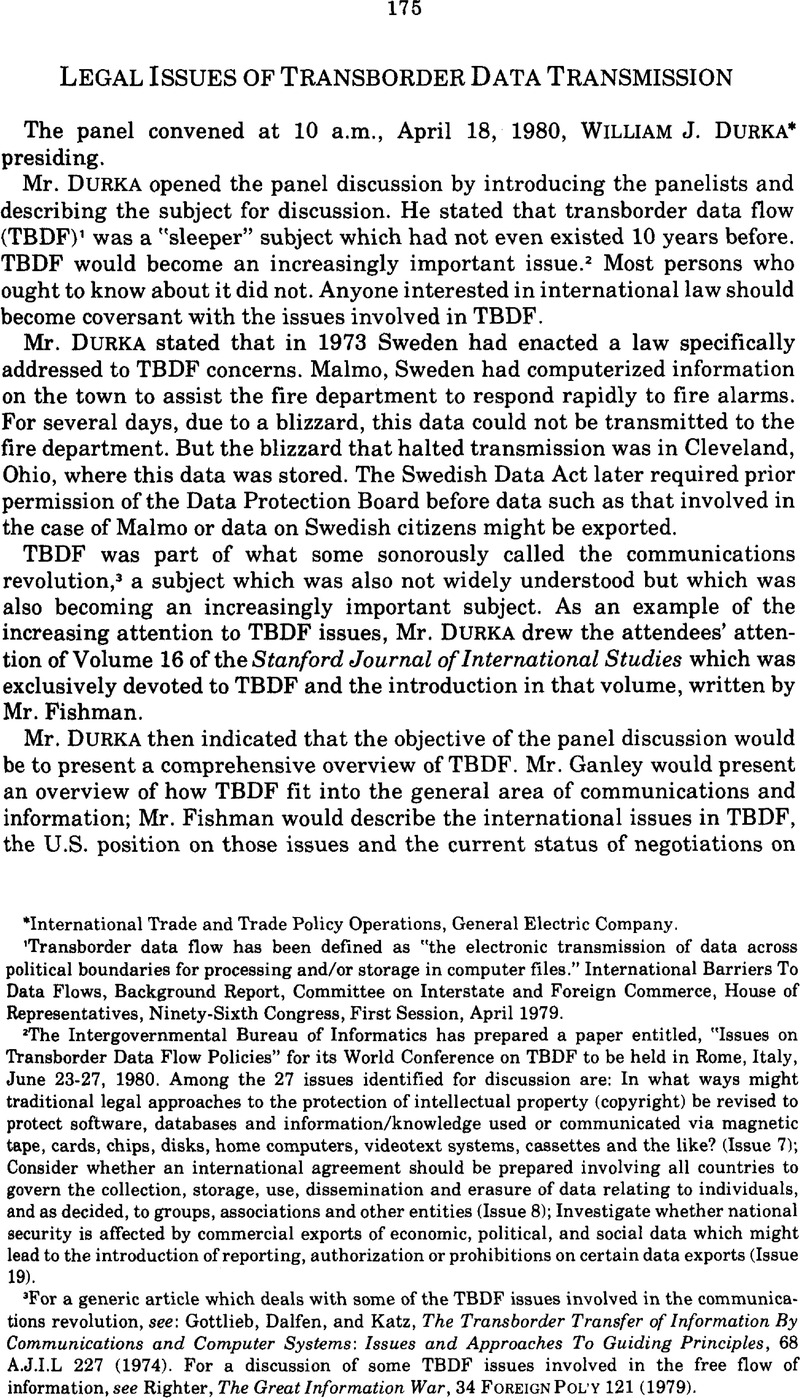No CrossRef data available.
Article contents
Remarks of Oswald Ganley
Published online by Cambridge University Press: 28 February 2017
Abstract

- Type
- Legal Issues of Transborder Data Transmission
- Information
- Copyright
- Copyright © American Society of International Law 1980
References
Page 175 note * International Trade and Trade Policy Operations, General Electric Company.
1 Transborder data flow has been defined as “the electronic transmission of data across political boundaries for processing and/or storage in computer files.” International Barriers To Data Flows, Background Report, Committee on Interstate and Foreign Commerce, House of Representatives, Ninety-Sixth Congress, First Session, April 1979.
2 The Intergovernmental Bureau of Informatics has prepared a paper entitled, “Issues on Transborder Data Flow Policies” for its World Conference on TBDF to be held in Rome, Italy, June 23-27, 1980. Among the 27 issues identified for discussion are: In what ways might traditional legal approaches to the protection of intellectual property (copyright) be revised to protect software, databases and information/knowledge used or communicated via magnetic tape, cards, chips, disks, home computers, videotext systems, cassettes and the like? (Issue 7); Consider whether an international agreement should be prepared involving all countries to govern the collection, storage, use, dissemination and erasure of data relating to individuals, and as decided, to groups, associations and other entities (Issue 8); Investigate whether national security is affected by commercial exports of economic, political, and social data which might lead to the introduction of reporting, authorization or prohibitions on certain data exports (Issue 19).
3 For a generic article which deals with some of the TBDF issues involved in the communications revolution, see: Gottlieb, Dalfen, and Katz, The Transborder Transfer of Information By Communications and Computer Systems: Issues and Approaches To Guiding Principles, 68 A.J.I.L 227 (1974). For a discussion of some TBDF issues involved in the free flow of information, see Righter, The Great Information War, 34 FOREIGN POLY 121 (1979).
4 See for example, XVIIth UNESCO General Conference, 1972, “Declaration of Guiding Principles on the Use of Satellite Broadcasting for the Free Flow of Information, the Spread of Education, and Greater Cultural Exchange” in Report of the Working Group on Direct Broadcast Satellites at its Third Session, U.N. Doc. A/AC.105/83, May 25, 1970.
5 The geostationary orbit is located 22,300 miles above the equator. A satellite placed in such an orbit will remain in a fixed position over a given geographic location.
6 See for example: Eger, Emerging Restrictions On Transnational Data Flows: Privacy Protection or Non-Tariff Trade Barriers? 10 LAW AND POL'Y IN INTL BUS. 1055 (1978).


